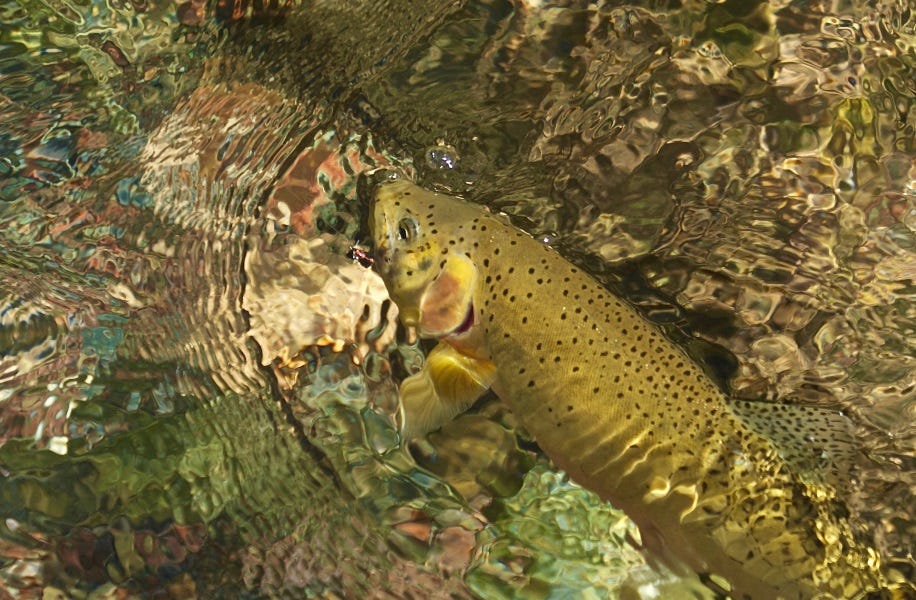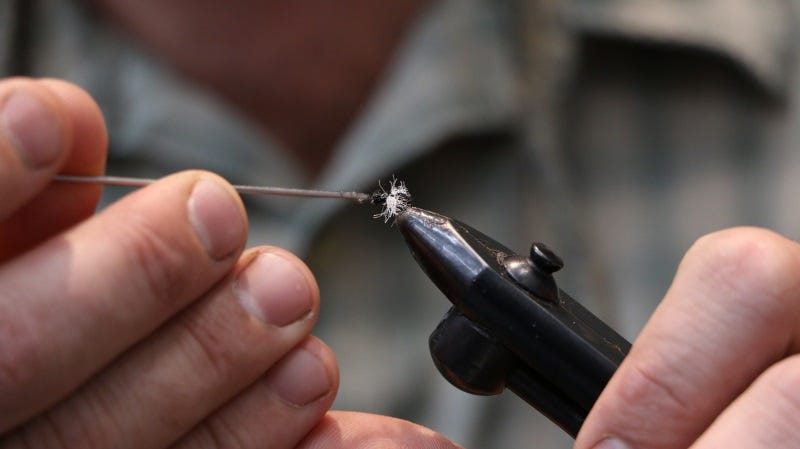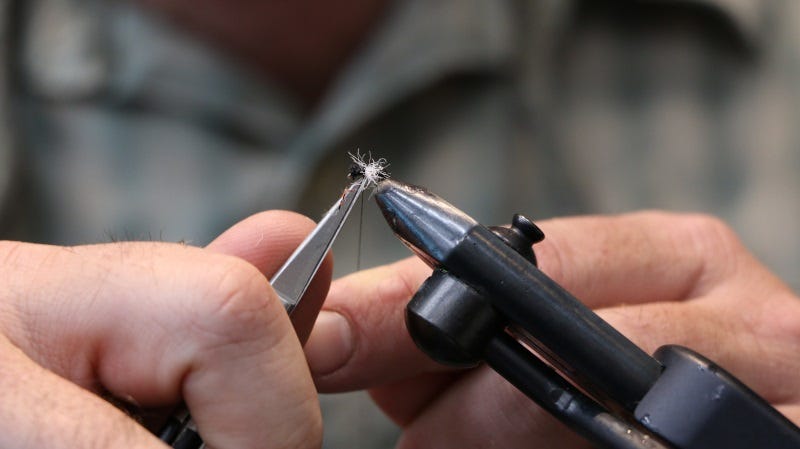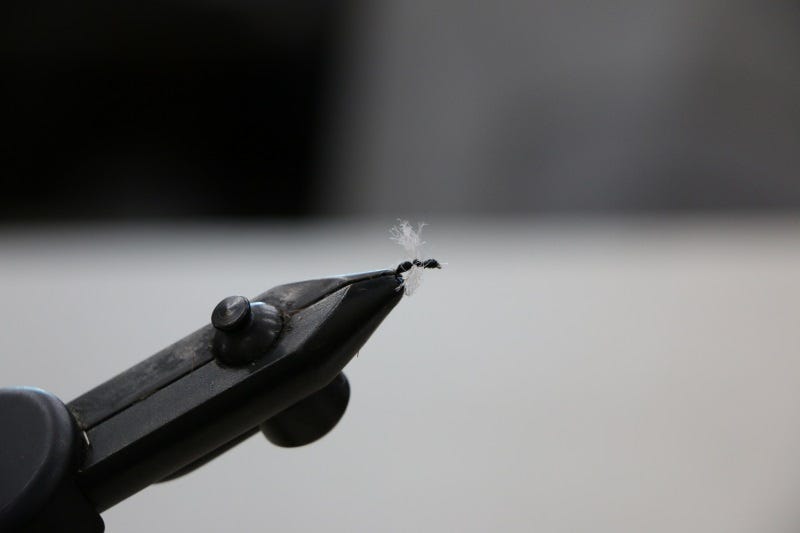How To Match Late Season Flying Ants

By Tyler Balich

My first introduction with tiny little ants was about 15 years ago, with a guy named Larry Winey.
Larry was a super quiet guy from Pennsylvania. He was in his late 50’s or early 60’s at that time and made annual pilgrimages to north Idaho, usually in late summer, about the first of September. He was one of the most soft-spoken and humble humans I’ve come across. And he could have been different—this guy could fish.
Surprisingly, I found out that he had one fly box dedicated to one fly—the ant. To be honest, I’m not sure of the scientific name of this insect, but it’s common in the northern Rockies during late summer and worth having in your fly boxes through September. I just call it, “Larry’s Ant.”
These are flying ants, and even a size 18 might get rejected, so I usually tie mine in size 20 and 22. Larry fished his ant behind a hopper in sizes 18 through 22 and sometimes just fished two ants in tandem.
These are the ants we have online today.

When these things hit the water there are lots of them. In fact they can mass like Tricos at times, and when they do the fish really key on them. The best time to fish ant patterns is on breezy days, as lots of ants are driven to the water by the wind. In addition, due to wind disrupting the surface of the water, you can probably get away with 5X tippet—even with size 20 and 22 imitations—whereas on a still day, when the surface is slick, you definitely have to go with 6X tippet. When going with 6X you’re bound too lose more fish. The wind also allows you to get away with a shorter leader. On calm days you might need to go with a 12-to 14-foot leader.

I remember a really hot late-August day on Montana’s Clark Fork River. We were in a stretch called Death Valley, which is a very long, calm reach that’s usually devoid of fish during mid-summer at low flows. Or so I thought. On this particular day, Larry was in the back of the boat and we were just taking it easy floating down the river, not really concentrating on fishing, more enjoying the scenery and feeling our skin cook. Then, a pretty stiff breeze kicked up and the light switch turned on. Fish started rising. Not a few, but quite a few. Enough to get Larry and I excited. And he knew precisely what to give them. I could not see what they were eating, but Larry said, “The ants are out,” then bit off his PMD and put on one of his flying ants. Bingo! In short order we caught a handful of trout that just decided to magically start rising midday, in 90 degree heat. I was astounded and definitely took note.
Want to explore some tying supplies?

After that experience, I created a designated ant box, just like Larry’s. And I loaded it with a simple size-18 to 22 ant, tied on a standard dry-fly hook. I use black fine and dry dubbing to create the abdomen and thorax on this pattern, and I use white poly for the spent wing. A black hackle in the middle keeps it afloat. Sometimes I’ll incorporate a little black Crystal-Flash into the pattern and that often proves deadly.
When fishing this pattern, be sure to cover rises, but you can also fish it blind along shady banks, behind your hopper or in tandem with another ant. Give it a twitch once in a while. You’ll be surprised how many fish elect an ant over the hopper.
